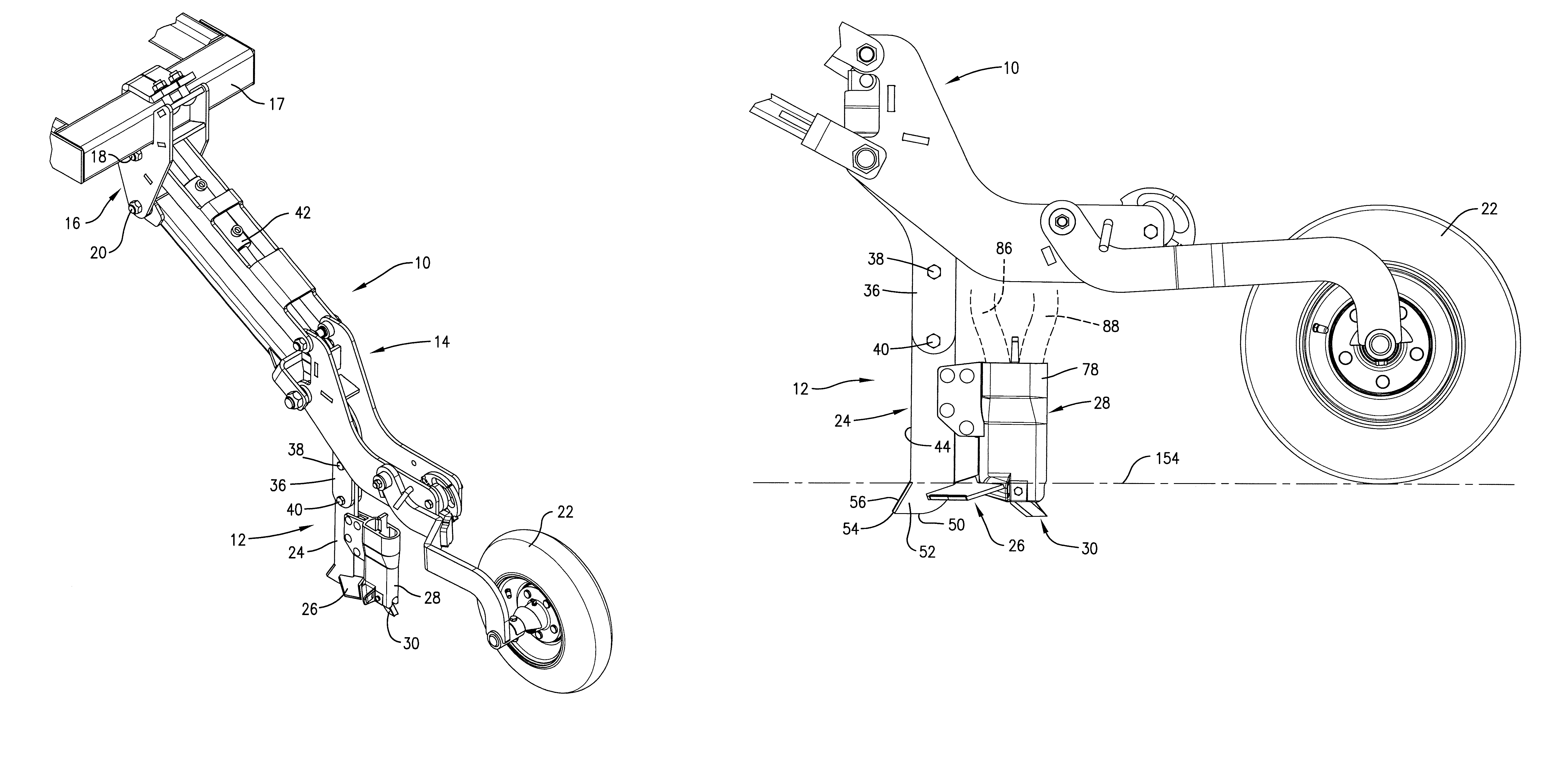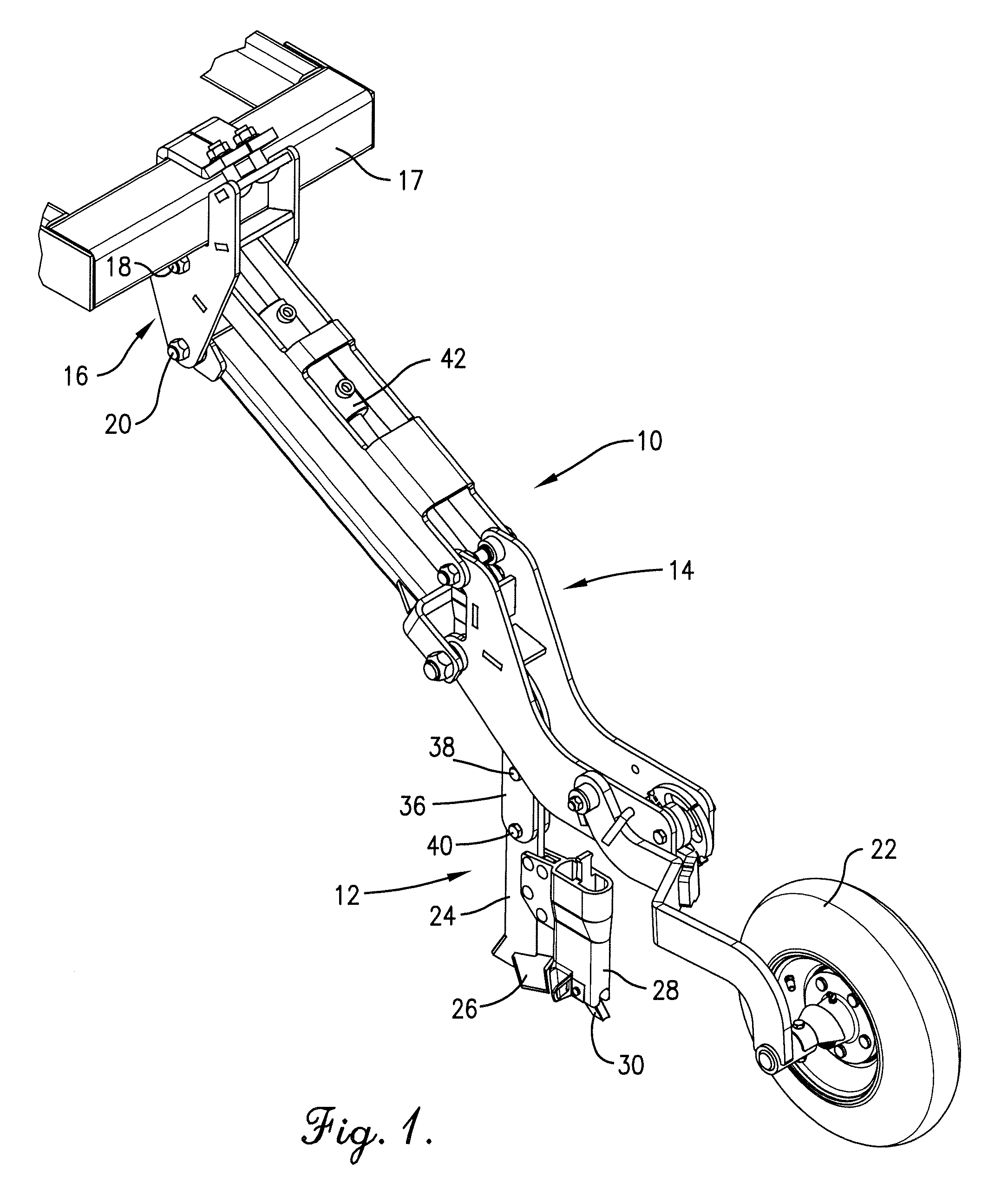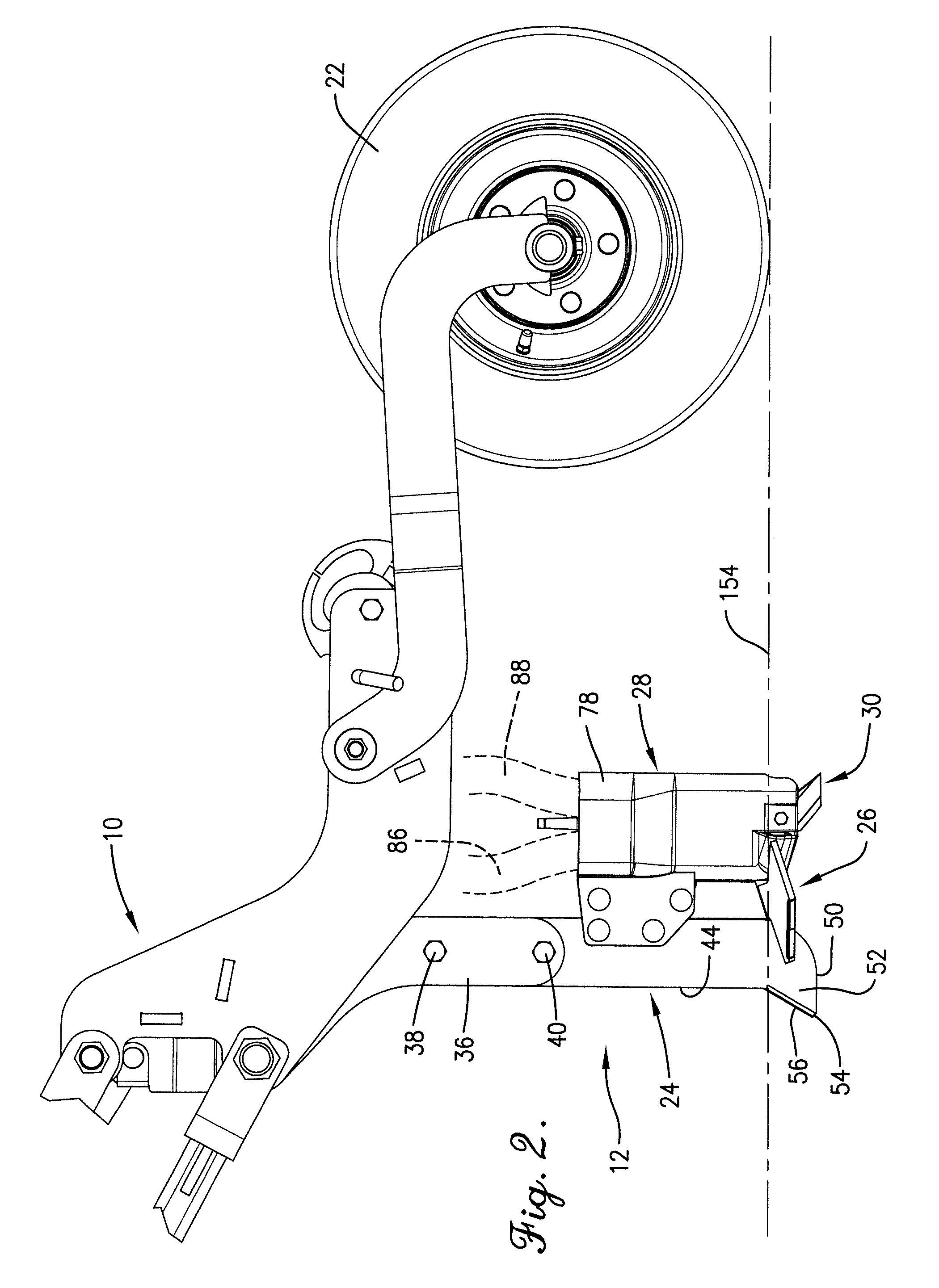Seed and fertilizer placement apparatus having double shoot seed boot
a seed and fertilizer technology, applied in the field of double shoot devices, can solve the problems of added power requirements for pulling both, risk that has to be managed, and the need to add a separate set of fertilizer openers to the seeder, so as to improve the germination rate and reduce the risk of plugging
- Summary
- Abstract
- Description
- Claims
- Application Information
AI Technical Summary
Benefits of technology
Problems solved by technology
Method used
Image
Examples
Embodiment Construction
[0031]The present invention is susceptible of embodiment in many different forms. While the drawings illustrate and the specification describes certain preferred embodiments of the invention, it is to be understood that such disclosure is by way of example only. There is no intent to limit the principles of the present invention to the particular disclosed embodiments.
[0032]The exemplary opener 10 illustrated in FIGS. 1 and 2 includes a double shoot seed and fertilizer placement unit 12 in accordance with the present invention mounted on and carried by a carrier assembly 14 that may take a variety of different forms. In addition to placement unit 12 and carrier assembly 14, opener 10 also includes a mounting bracket 16 at the upper forward end of carrier assembly 14 that secures the latter to a tool bar 17 associated with and forming a part of a frame of a larger implement. It will be understood that, typically, opener 10 is one of a plurality of such openers associated with the imp...
PUM
 Login to View More
Login to View More Abstract
Description
Claims
Application Information
 Login to View More
Login to View More - R&D
- Intellectual Property
- Life Sciences
- Materials
- Tech Scout
- Unparalleled Data Quality
- Higher Quality Content
- 60% Fewer Hallucinations
Browse by: Latest US Patents, China's latest patents, Technical Efficacy Thesaurus, Application Domain, Technology Topic, Popular Technical Reports.
© 2025 PatSnap. All rights reserved.Legal|Privacy policy|Modern Slavery Act Transparency Statement|Sitemap|About US| Contact US: help@patsnap.com



